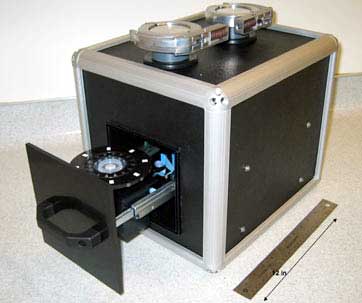Researchers at MIT Lincoln Laboratory have developed a sensor that can detect airborne pathogens such as anthrax and smallpox.
The new device, called PANTHER (for PAthogen Notification for THreatening Environmental Releases), represents a 'significant advance' over any other sensor, according to James Harper of Lincoln Lab's Biosensor and Molecular Technologies Group.
Current sensors take at least 20 minutes to detect harmful bacteria or viruses in the air, but the PANTHER sensors can perform detection and identification in less than three minutes.
The technology has been licensed to Innovative Biosensors of Rockville, Maryland. In January, IBI began selling a product, BioFlash, that uses the PANTHER technology.
'There is a real need to detect a pathogen in less than three minutes, so you have time to take action before it is too late,' said Harper, the lead scientist developing the system.
The PANTHER system uses a cell-based sensor known as CANARY (after the birds sent into mines to detect dangerous gases), and can pick up a positive reading with only a few dozen particles per litre of air.
The device could be used in buildings, subways and other public areas, and can currently detect 24 pathogens, including anthrax, plague, smallpox, tularemia and E. coli.

The CANARY sensor has been tested in rural and coastal environments as well as urban ones. It could eventually be used on farms or in food-processing plants to test for contamination by E. coli, salmonella, or other food-borne pathogens.
Another potential application is in medical diagnostics, where the technology could be used to test patient samples, giving rapid results without having to send samples to a laboratory.
The research on PANTHER was funded by the US Defense Threat Reduction Agency.




Nanogenerator consumes CO2 to generate electricity
Whoopee, they've solved how to keep a light on but not a lot else.